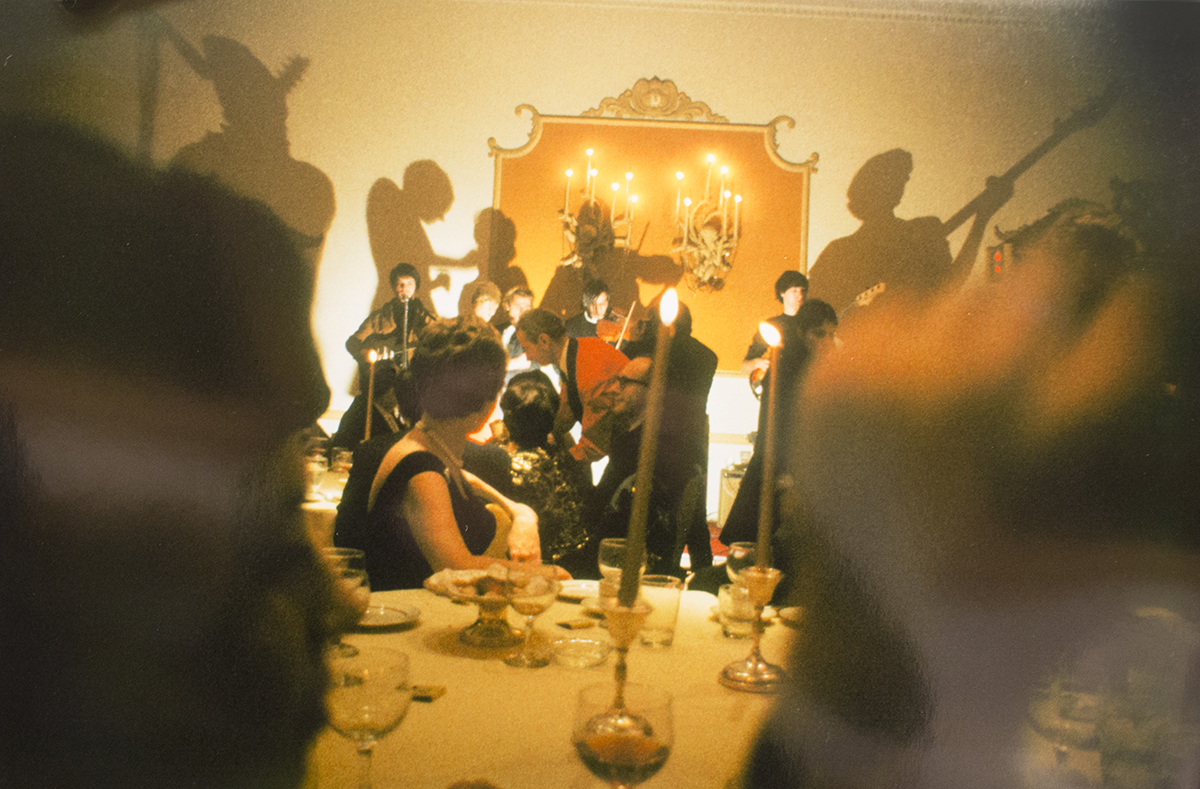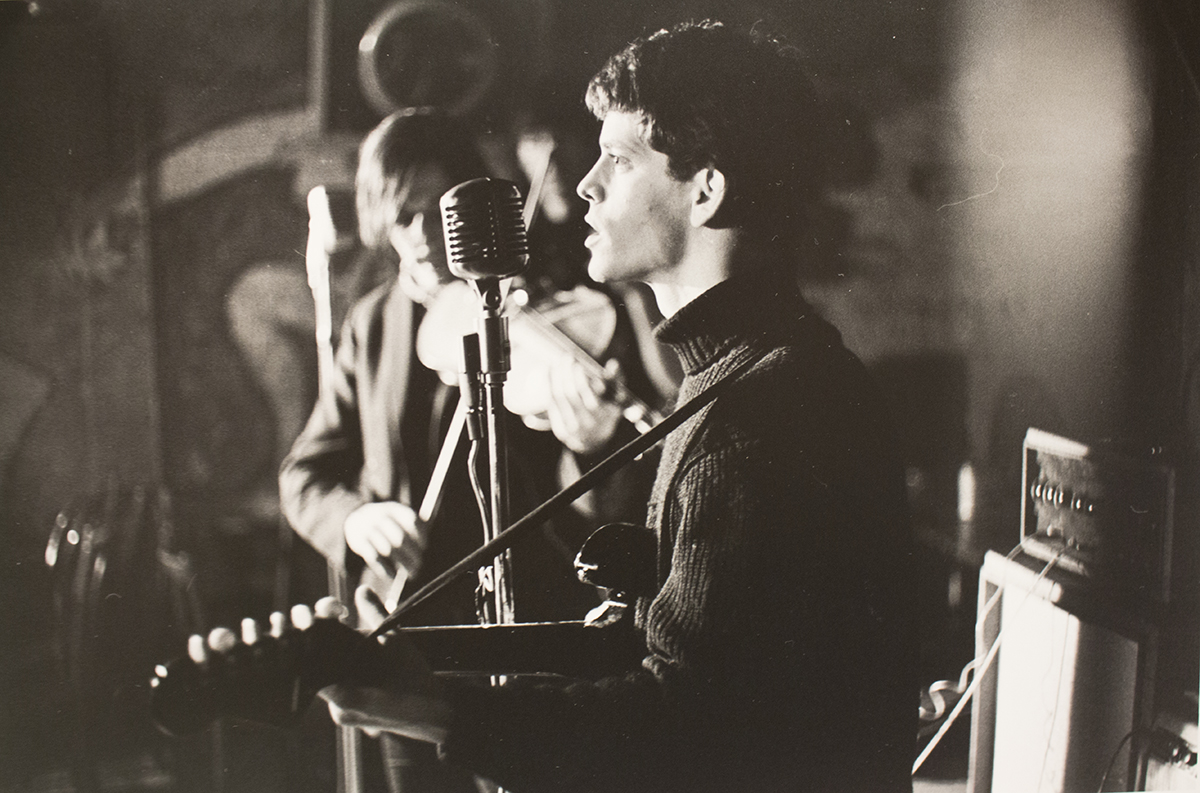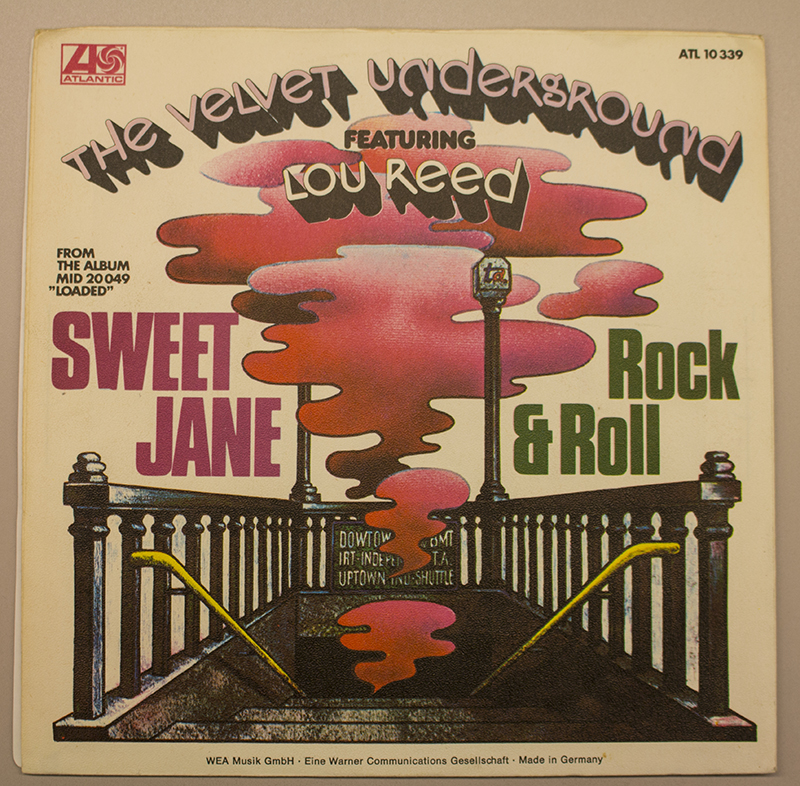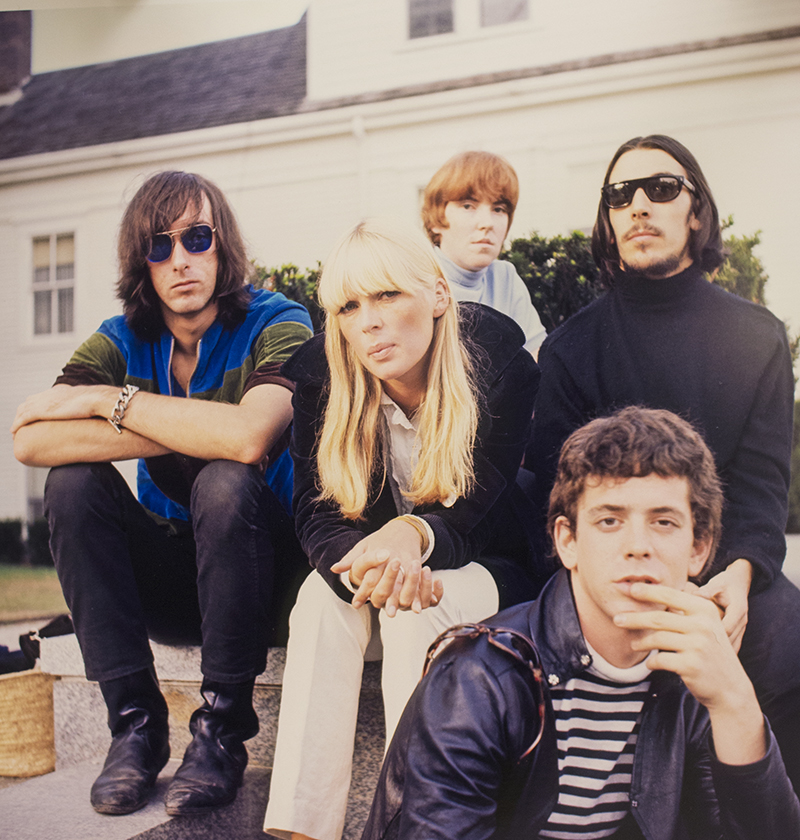Velvets archive now underground at Cornell Library
By Melanie Lefkowitz




At a formal dinner for the New York Society for Clinical Psychiatry almost 50 years ago, black-tie clad psychiatrists were astonished by a musical act called The Velvet Underground and their brand-new singer, Nico.
Today, rare photographs of this event – along with a treasure trove of one-of-a-kind Velvet Underground posters and fliers, unreleased recordings, handwritten lyrics, news clippings and more – have landed in a Cornell University Library vault three stories below the Arts Quad, where researchers can study the band’s outsized impact, from 1960s and 1970s counterculture to today’s mainstream.
Twenty-five boxes of Velvet Underground material recently were donated to the library’s Division of Rare and Manuscript Collections by collector and author Johan Kugelberg. It is the largest archive of Velvet Underground material held by an institution, according to the library’s rare and manuscript curator, Katherine Reagan.
“With this collection, we can see how they were being marketed, categorized, packaged, consumed. We can see how the perception of counterculture changed over time, and how the Velvets came to be seen as one of the most influential rock bands of their era,” Reagan said. “The narratives supported by this kind of material are increasingly important in academic discourse – faculty across multiple disciplines are interested in these important, countercultural, music-based collections.”
The Velvet Underground’s early roots were in central New York. Lou Reed and guitarist Sterling Morrison attended Syracuse University, where they were introduced by drummer (and Ithaca College student) Maureen Tucker’s brother. The band later formed in New York City, with John Cale on viola, keyboards and bass. Andy Warhol became their manager in 1965, adding the German singer Nico and launching them on a multimedia roadshow, the Exploding Plastic Inevitable.
The Velvet Underground never achieved major commercial success in its lifetime as a band, but its experimental sound and iconic songs such as “Sweet Jane,” “All Tomorrow’s Parties” and the seven-minute “Heroin” have drawn a fervent cult following for five decades.
Highlights from the collection include an oversized poster promoting the Velvet Underground’s first album, believed to be the only surviving copy; notes from Lou Reed, who died in 2013; a handwritten set list for a performance at Poor Richard’s in Chicago; foreign and domestic bootleg recordings; and images of performances taken by prominent contemporary photographers.
“This collection includes things that are unique, and expensive, and scarce,” Reagan said. “Collectors do all this work of gathering materials together into a meaningful whole, so scholars will have the ability to examine the evidence and make their own assessments.”
The band’s involvement with various genres and movements give it broad appeal to researchers at Cornell and elsewhere.
“The wealth of diverse materials – including books, original photographs, set lists, posters, press releases, early magazines, tapes and ephemera – invites an interdisciplinary approach and will draw scholars working at the intersection of pop music, pop art, gender and sexuality studies, sound and media studies, and performance art,” said Judith Peraino, professor of musicology in the College of Arts and Sciences, one of three Cornell professors who previewed the collection the day after it arrived.
“Besides being (and remaining) one of the most influential rock bands of all time, the Velvet Underground is of real interest for the unusual extent of their connections to other important movements and scenes,” said Jeremy Braddock, associate professor of English, who also looked through the archive in late September. “Prior to coming to New York, John Cale was associated with the avant-garde Fluxus group, and later with the composer Aaron Copeland; in its early years the Velvet Underground famously collaborated with Andy Warhol and the Factory.”
The collection, currently still in boxes, will be cataloged and described in the months ahead, and soon will become freely accessible to researchers and the public, Reagan said.
Kugelberg said he hopes the Velvets collection will be used similarly to the Cornell Hip Hop Collection, which is accessible to everyone from high school students to professors.
“Now people can study rock and roll, fine art, pop art, design and fashion at a point in time when the playing field was completely open. It’s important to me how the very complicated cultural narrative of the postwar 20th century is communicated through library holdings,” he said. “For the Velvets archive to land at Cornell is perfect.”
Melanie Lefkowitz is a staff writer and editor at Cornell University Library.
Media Contact
Get Cornell news delivered right to your inbox.
Subscribe